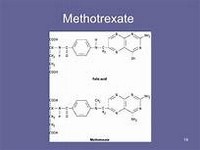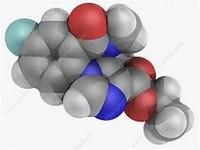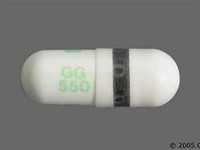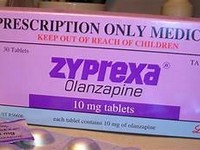Fenoprofen

Fenoprofen
CLINICAL USE
NSAID and analgesic
DOSE IN NORMAL RENAL FUNCTION
300–600 mg 3–4 times a day; maximum 3 g daily
PHARMACOKINETICS
Molecular weight :558.6 (as calcium salt) %Protein binding :>99 %Excreted unchanged in urine : 2–5 Volume of distribution (L/kg) :0.1half-life – normal/ESRD (hrs) :3/Unchanged DOSE IN RENAL IMPAIRMENT
GFR (mL/MIN)
20 to 50 : Start with low dose, but avoid if possible 10 to 20 : Start with low dose, but avoid if possible <10 : Start with low dose, but only use if on dialysis DOSE IN PATIENTS UNDERGOING RENAL REPLACEMENT THERAPIES
CAPD :Unlikely to be dialysed. Start with low doses and increase according to response. HD :Not dialysed. Start with low doses and increase according to response. See ‘Other Information’HDF/high flux :Not dialysed. Start with low doses and increase according to response. See ‘Other Information’CAV/VVHD :Not dialysed. Dose as in GFR 10 to 20 mL/min . IMPORTANT DRUG INTERACTIONS
Potentially hazardous interactions with other drugsACE Inhibitors and angiotensin- II antagonists: increased risk of hyperkalaemia and nephrotoxicity; reduced hypotensive effectAnalgesics: avoid concomitant use with other NSAIDs or aspirin; avoid concomitant use with ketorolac (increased side effects and haemorrhage)Antibacterials: possibly increased risk of convulsions with quinolonesAnticoagulants: effects of coumarins enhanced; possibly increased risk of bleeding with heparins and coumarinsAntidepressants: increased risk of bleeding with SSRIs or venlafaxineAntidiabetic agents: effects of sulphonylureas enhancedAnti-epileptics: possibly enhanced effect of phenytoinAntivirals: concentration possibly increased by ritonavir; increased risk of haematological toxicity with zidovudineCiclosporin: may potentiate nephrotoxicity Cytotoxic agents: reduced excretion of methotrexate; increased risk of bleeding with erlotinib Lithium: excretion reduced Diuretics: increased risk of nephrotoxicity; antagonism of diuretic effect; hyperkalaemia with potassium-sparing diureticsPentoxifylline: increased risk of bleeding Tacrolimus: increased risk of nephrotoxicity ADMINISTRATION
Reconstition
– Route
Oral Rate of Administration
–Comments
–.FEnoProFEn 301 OTHER INFORMATION
Contraindicated in patients with history of significantly impaired renal functionInhibition of renal prostaglandin synthesis by NSAIDs may interfere with renal function, especially in the presence of existing renal disease – avoid use if possible; if not, check serum creatinine 48–72 hours after starting NSAID – if it has increased, discontinue therapyPossibility of decreased platelet aggregationCan use normal doses in patients with ERF on dialysisUse with caution in renal transplant recipients – can reduce intrarenal autocoid synthesisAssociated with nephrotic syndrome, interstitial nephritis, hyperkalaemia, sodium retention
See how to identify renal failure stages according to GFR calculation
See how to diagnose irreversible renal disease
Home









